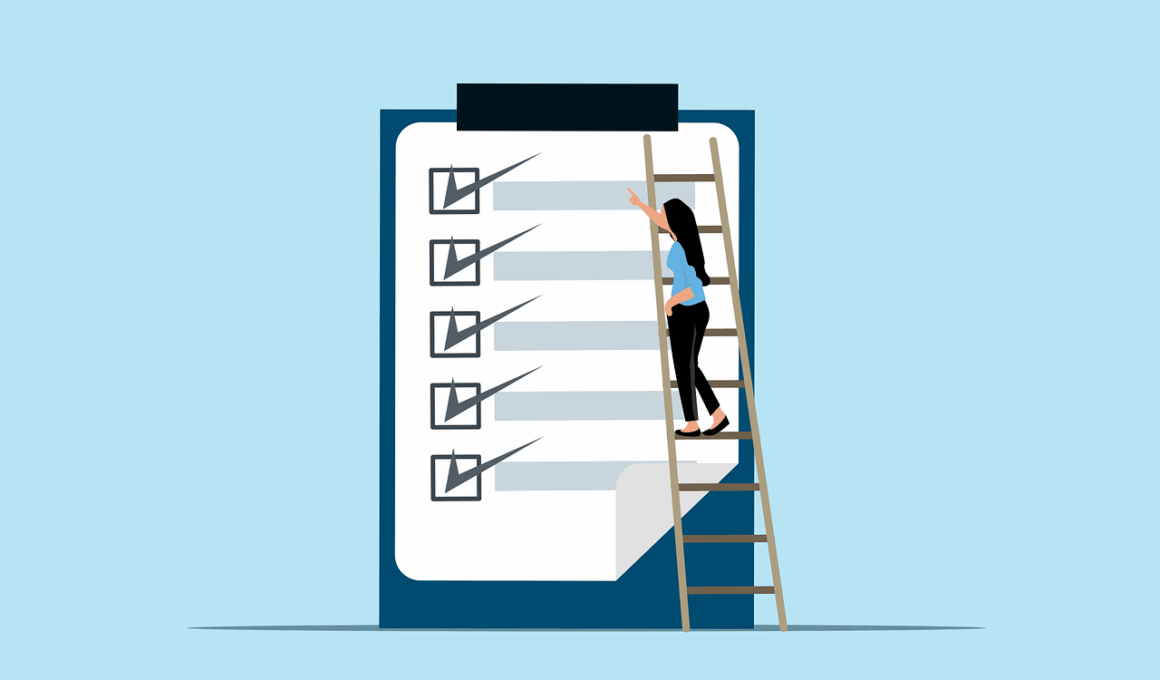Incorporating Breaks and Fitness to Boost Academic Performance
Effective academic performance requires more than just hours of study. Students often overlook the importance of incorporating breaks and physical fitness into their routines. Strategic breaks can enhance focus and retention of information during study sessions, while engaging in regular physical activity can have significant mental benefits. Exercise stimulates brain function, reduces stress, and elevates mood. When students establish a balanced schedule that includes both study time and breaks, along with periods for fitness, they often experience greater productivity and learning outcomes. To effectively implement this, students might consider adopting techniques such as the Pomodoro Method, which involves studying for 25 minutes followed by a 5-minute break. This can keep their minds fresh and alert. Furthermore, short bursts of physical activity, like stretching or a quick walk, can invigorate them between study sessions. Schools and colleges can even promote this approach by providing resources or dedicated times for physical education. The integration of fitness and breaks into academic routines can yield positive results, leading to a more holistic and effective learning experience.
One method for effectively integrating fitness into the academic curriculum is through active learning techniques, which encourage movement. These techniques can be used in many learning environments and help foster engagement among students. For instance, classrooms can be rearranged to allow for group work and discussions instead of traditional rows of desks. This encourages collaboration and also allows students to be physically active while learning. Additionally, implementing walking meetings or study groups can further enhance engagement while providing necessary movement. Educators can also include educational games that require physical activity, making learning a more dynamic experience. These active methods not only aid in comprehension but also help students to feel energized and motivated. Schools should consider offering extracurricular fitness programs to create a culture of health and wellness on campus. Dance classes, yoga sessions, or team sports can be integral in keeping students fit while engaging with their peers. Moreover, these programs can help build social skills, and friendships, and combat stress. By prioritizing movement along with academic goals, both students and educators can come together to create a more vibrant learning environment.
Setting Academic Goals with Breaks and Fitness
Setting realistic academic goals is critical to success for every student. When academic goals are aligned with fitness and regular breaks, this boosts motivation and achievement. Students should start by identifying their personal objectives, whether they pertain to grades, study habits, or subject mastery. From there, implementing a structured plan that intersperses study sessions with fitness activities and breaks can make a significant difference. For instance, a student aiming for a specific grade might allocate dedicated study blocks and ensure they incorporate fitness routines, such as jogging or yoga, to build resilience against stress. Incorporating breaks into study schedules also reduces burnout, as these pauses provide necessary rest and mental refreshment. The key is to ensure that goals remain specific, measurable, achievable, relevant, and timely. Keeping a journal can aid this process, allowing students to reflect on their progress and adjust their strategies. Together, these combined efforts significantly improve academic performance, mental health, and overall well-being among students. By understanding how fitness and breaks contribute to success, students can create a more balanced and effective approach to their academic pursuits.
Another significant aspect of setting academic goals is ensuring mental well-being during the pursuit of those goals. The pressure to achieve high academic standards can lead to stress and anxiety, significantly impacting performance. Incorporating physical fitness into daily routines can be tremendously beneficial in alleviating these pressures. Regular exercise acts as a natural stress reliever and can positively influence mood levels, which is essential for maintaining focus. Students should engage in activities that they enjoy, as they’re more likely to maintain motivation. Moreover, the role of sleep cannot be understated; prioritizing rest is crucial for cognitive function and overall health. It’s essential for students to understand that setbacks and challenges are part of the learning curve. Creating an academic plan that includes fitness, mindfulness, and balanced breaks can contribute to long-term success, making the academic journey more enjoyable. Techniques such as meditation or breathing exercises during breaks can help enhance concentration and calm anxious thoughts. Overall, a well-rounded strategy that factors in fitness and breaks can lead to substantial improvements in not just academic performance, but life satisfaction as well.
Creating a Supportive Environment
To cultivate an environment that promotes both academic performance and physical wellbeing, collaborative efforts are needed from schools, families, and students. Schools can play a pivotal role by integrating fitness programs into the curriculum and accommodating regular breaks for students. Educators can constructively encourage this by providing lessons that raise awareness about the benefits of physical activity. Families can also support students by engaging in physical activities together, reinforcing the notion that fitness can be fun. Open communication about academic pressures is essential; students should feel comfortable expressing feelings of overwhelm. By establishing a community approach to education, students can feel more supported and less isolated in their academic struggles. Additionally, schools should consider creating open spaces for movement, such as outdoor learning environments, which allow for both study and relaxation. By fostering this perspective of shared responsibility, students are more likely to adapt to both academic and fitness goals. Inviting local fitness professionals to conduct workshops may inspire students to explore various physical activities beyond traditional sports. These collective efforts can significantly boost engagement levels, promoting a culture that emphasizes health and educational excellence.
In conclusion, the importance of incorporating fitness and regular breaks to boost academic performance cannot be overstated. Embracing a balanced and holistic approach to education can lead not only to better academic results but also improved mental health and well-being. Students benefit immensely when they understand that personal academic goals should include wellness strategies. By prioritizing regular physical activity and ensuring sufficient breaks, they can enhance their cognitive abilities and alleviate the stress associated with academic demands. Schools, educators, families, and communities must collectively encourage this approach to foster a positive academic culture. Implementing a plan that incorporates fitness and breaks while setting realistic academic goals is vital. Taking time to recharge and refocus ensures that students remain engaged and enthusiastic about learning. The modern educational landscape requires more than traditional study methods; it requires adaptability and innovation. Students are empowered when they have access to resources that promote both academic excellence and a healthy lifestyle. Most importantly, fostering a balanced approach to learning may better prepare students not just for school, but for a fulfilling life beyond the classroom.
Final Thoughts
In summary, setting academic goals combined with incorporating breaks and fitness results in a more effective educational experience. Students who prioritize physical health alongside their studies gain valuable skills that last a lifetime. This approach also instills discipline and fosters a sense of accomplishment in both academic and fitness endeavors. As students navigate through their educational journeys, the choice of incorporating wellness is essential. Whether it’s participating in a hobby, attending a fitness class, or taking deliberate breaks, each effort counts. Understanding the contribution of both mental and physical health to academic success will lead to more fulfilled, well-rounded individuals. Colleges and schools must implement programs that help develop this mindset early in students’ lives. Building habits focused on fitness and break incorporation can pave the way for sustained academic achievement. Encouraging a community that values health will empower students. Through supportive environments, students can realize their potential fully. Embracing wellness alongside studies will allow students to enjoy their time in education while achieving their goals effectively. The journey toward success integrates both academic aspirations and personal well-being in a holistic manner.
This narrative emphasizes the significant link between academic success and well-being by showing how incorporating breaks and fitness can enhance academic performance. It enables students to be mindful of their health while concurrently striving for educational excellence. The fulfillment that comes from achieving one’s academic goals is deeply rewarding, especially when complemented by a healthy lifestyle. Having moments of reprieve and engaging in physical activity provides valuable tools to tackle academic challenges. Thus, by making a healthy lifestyle part of the academic journey, students can better prepare for future challenges. Such integration will lead to well-adjusted individuals who know how to balance various aspects of life. Academic institutions have a unique opportunity to shape students into well-rounded individuals who not only excel academically but also cultivate a love for fitness. The notion is clear: when students thrive personally and physically, academic achievements often follow. This holistic approach should be adopted widely to create vibrant learning environments that produce capable, resilient graduates ready to contribute positively to society. A balanced focus on academic goals, including fitness and well-being, represents the key to successful educational pathways.


